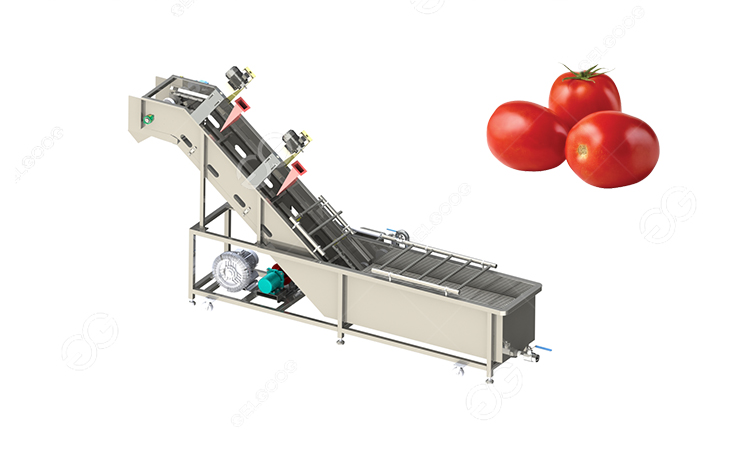In the world of food processing, efficiency, hygiene, and quality are paramount. Tomato washing machines play a crucial role in ensuring that tomatoes, a staple ingredient in many cuisines worldwide, are thoroughly cleaned before they undergo further processing or reach the consumer’s table. What is the use of tomato washing machine? These specialized machines are designed to streamline the cleaning process while maintaining the integrity and safety of the tomatoes.

Importance of tomato washing machines
Food safety: Contaminants such as dirt, pesticides, bacteria, and residues from handling can adhere to the surface of tomatoes during cultivation and transportation. Washing machines help eliminate these contaminants, reducing the risk of foodborne illnesses and ensuring that tomatoes are safe for consumption.
Quality preservation: Tomatoes come in various shapes and sizes, and maintaining their freshness and appearance is essential for consumer satisfaction. Washing machines remove any impurities without causing damage to the delicate skin of the tomatoes, preserving their quality and extending their shelf life.
Efficiency: Processing large volumes of tomatoes manually can be time-consuming and labor-intensive. Industrial washing machines automate the cleaning process, allowing for higher throughput and efficiency in food processing facilities. This automation also reduces the dependency on manual labor, minimizing the risk of errors and inconsistencies.
Regulatory compliance: Food processing industries must adhere to strict regulations and standards regarding hygiene and sanitation. Industrial tomato washing machines help businesses meet these requirements by providing a standardized and thorough cleaning process that complies with industry regulations and ensures product safety.
Functionality of tomato washing machines
Pre-rinsing: The first step in the cleaning process involves pre-rinsing the tomatoes to remove any large debris or surface contaminants. This stage typically utilizes a gentle spray of water to loosen dirt and foreign particles.
Immersion washing: After pre-rinsing, the tomatoes are submerged in a tank filled with water or a sanitizing solution. Agitation or turbulence created within the tank helps dislodge stubborn contaminants from the surface of the tomatoes.
Brushing or scrubbing: In some advanced washing machines, soft brushes or scrubbing mechanisms may be employed to gently scrub the surface of the tomatoes, ensuring thorough cleaning without causing damage.
Rinsing and drying: Following the washing and scrubbing stages, the tomatoes undergo a final rinse to remove any residual cleaning agents or debris. Depending on the machine’s design, a drying mechanism such as air blowers or centrifugal force may be employed to remove excess moisture from the tomatoes before they move on to further processing or packaging.
Sanitization: Some washing machines are equipped with sanitization features, such as uv light or chemical treatments, to further reduce microbial contamination and ensure the highest level of food safety.
Tomato washing machines play a vital role in the food processing industry by efficiently and effectively cleaning tomatoes to ensure their safety, quality, and compliance with regulatory standards. By automating the cleaning process and employing advanced technologies, these machines help streamline operations, minimize the risk of contamination, and deliver fresh and hygienic tomatoes to consumers worldwide.